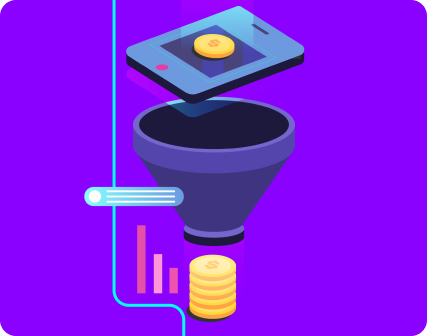Cross-selling and upselling in retail: How to increase average order value
How to boost your online store sales using cross-selling and upselling in retail? What is the difference between these two techniques? Where and how should they be applied? In this article, you will find the answers to these questions, as well as illustrative examples of using these marketing strategies in online stores.
Cross-selling and upselling in retail: What’s the difference?
Upselling and cross-selling are two marketing techniques with different principles. The idea behind upselling is increasing an average order value by demonstrating benefits from the purchase and savings on it — increased amount of goods, their portion, size, extension of functionality etc. — for a little extra payment to obtain obvious benefit.

Cross-selling is a sales technique used to get a customer to spend more by purchasing a complementary or additional product that’s related to what’s being bought already.

Don’t be afraid to offer your customers additional products/services at the moment of purchase. Cross-selling can accompany the buyer at all the stages of picking the goods, even during the cart overview. If you set it up correctly and accurately, you will be able to increase not only average order value, but also ARPU (Average revenue per user).
Why use these tools
Cross-selling and upselling in retail are used to increase the revenue of an online store, but there is actually more to them. Here are 3 main benefits of upselling and cross-selling:
1. improve KPIs (average order value and ARPU);
2. increase customer engagement and page depth;
3. improve customers’ satisfaction through meeting their needs and showing care about them.
Effective setup of upselling and cross-selling techniques: How to do it?
The effectiveness of upselling and cross-selling techniques depends on how thoroughly and competently their operational algorithm was defined taking into account the product characteristics, understanding of the target audience and niche of the online store.
Upselling techniques in the product card
Upselling techniques in the product card prove effective if presented in accordance with a certain algorithm. Thus, there is no sense in offering women’s slippers next to men’s boots. It’s reasonable to offer products from the same or related category and the same price segment (or 5-10% more expensive). Use the higher value of the product as a benefit and argument to buy it for the customer. As the user transfers from one product to another one, related to it, he/she can get psychologically ready to buy a more expensive item.
Such an approach works quite well for online stores in the fashion niche, whereas for electronics shops things are more complicated. In this sector the price difference is usually too big and can sometimes reach 25%. Still, upselling can be applied here, too — for example, the price difference can be bridged by the information about available credits and installment payments.

Cross selling techniques in the product card and in the cart
Cross-selling works well in the product card and in the cart. Its effectiveness depends on the proper placement of the blocks on the pages of the online store.
Product card
In the fashion niche the following placement of blocks should be applied in the product card:
- Product photo
- Product characteristics that affect the choice
- Upsell block (“Related products”, “You might also like”, etc.)
- Cross-sell tools (“Complete your look”, “Frequently bought together”, “Package deal”, etc.)
As a result, with the help of the upsell block we show care about the customers, while motivating them for additional purchases using cross-selling tools. Thus, in the online shoe store Pratik, a matching bag to the selected pair of shoes is offered.

If it goes about the electronics store, another approach should be applied: in this case it is better to place the cross-sell block right after the product photo and description, and only after that — upsell items. For example, when buying a mobile phone, one gets 15% off on a cable to it. The user understands the value and benefit of the offer right at the beginning of the page, and the online store sells two items instead of one.

Cart
When the customer has already made a choice and put the product in the cart, additional service, warranty or related items can be offered.

Once the customers get to the cart, they can be offered to add gift wrap or a related product to the items they are buying. For example, while working on the Mon Amie project, we noticed that around 40% of the customers are men making presents for women. That’s why when our customers get to the cart, they are offered to buy gift wrap. Thus, not only did we solve the business objective to increase average order value, but also addressed the customer’s needs.

In the cart multi-level cross-selling can also be applied: when the customer adds one related product, the cart is updated and a list of the products from the next relevant category is suggested.
One of the most popular cross-selling tools for increasing average order value is gamification. Involve the customer into a game by offering to buy additional products in order to get a gift or free delivery. For example, for 966.ua delivery service, we developed a slider that demonstrates the benefit from acquiring an additional product.

6 common cross-selling and upselling mistakes in retail and how to avoid them
1. Absence of upselling and cross-selling techniques. In this case you don’t make use of the latent potential of the page, thus missing profit and depriving the customer of sufficient service.
2. Offering cheaper products when upselling.
3. Complicated / incomprehensible offer. The benefit of the upsell and cross-sell offers should be explicit and crystal clear to the customer.
4. Too long list of alternative products. Instead of offering half of the assortment to the customer as an alternative, limit the choice to 5-10 options. Otherwise, the customer might stop searching at all.
5. Irrelevant products in the upsell and cross-sell blocks. It’s useless and might annoy the customer.
6. Using upselling tools at the checkout. The customer might leave the cart page and never come back.
How to increase average order value with upselling and cross-selling techniques
Always offer additional products to the customer, don’t be afraid to experiment. Apply both cross-selling and upselling strategies in retail. Use them on different pages of the site or combine both options. If you set up the operational algorithm and place the blocks properly, you will increase conversion and average order value. For example, for online store glo™ we managed to increase the conversion rate by 22% by fixing usability issues.
And if you want to know more about how to invest in UX/UI design and CRO properly to increase your revenue, tap this link. 4 world-leading proven professionals from Optimizely, Hotjar, CXL, Baymard Institute will share their practical experience and give you the most essential recommendations on how to improve your eCommerce website.
More real-world Turum-burum cases?
Review our vast portfolio of cases in a variety of business fields to make sure of our expertise.
Go to Portfolio













.png)





